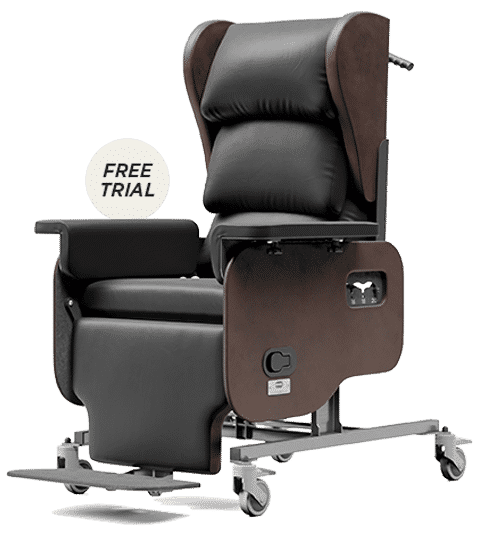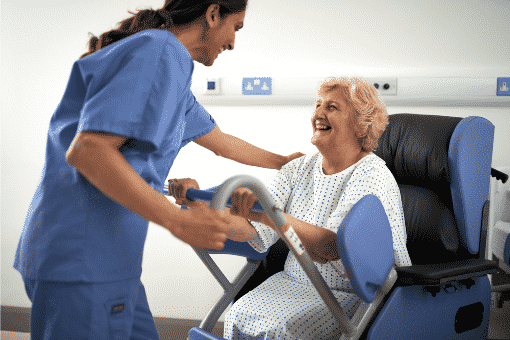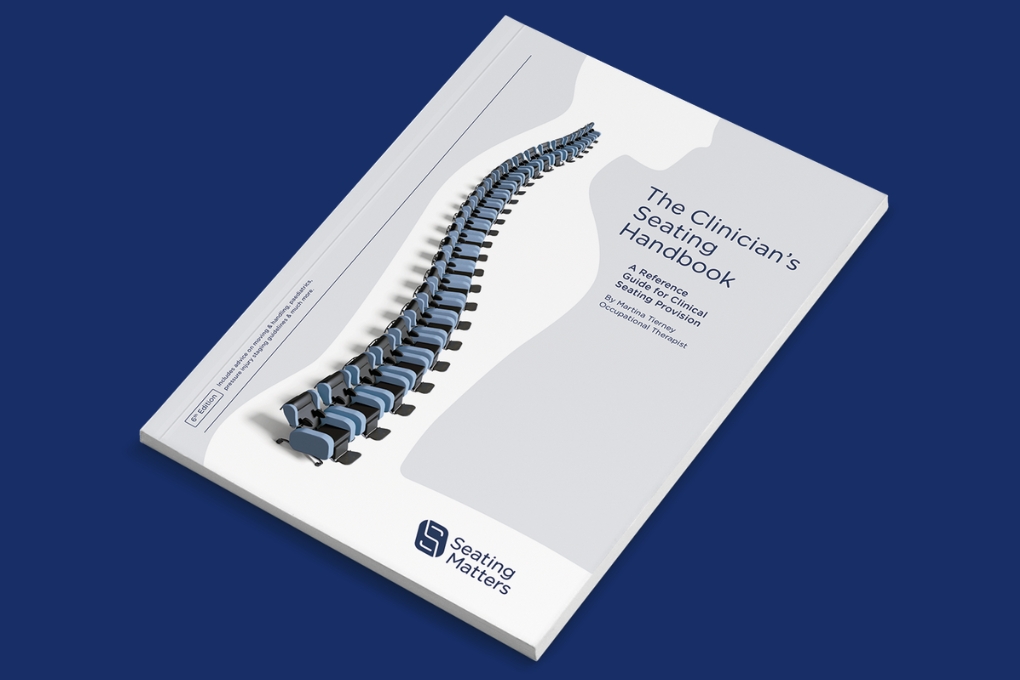By Seating Matters, Case Study, Cerebral Palsy, Scoliosis
This case study is a real patient scenario.
The images have been created from real photographs taken with permission. This is a real person in a real situation but illustrations have been used in order to protect their identity.
Images & Content © Seating Matters 2020
Background
- 19-year-old.
- Cerebral Palsy, spastic type.
- Scoliosis.
- Hiatal hernia with resulting reflux and other GI problems.
- Non-ambulatory.
- Living at home independently.
Problems with Old Chair
- Standard wheelchair meant for mobility with no tilt or recline options.
- Back was not fully supported against the back of the chair.
- Scoliosis was not supported with adaptations.
- Leg rest could not support her mild knee flexion contracture.
- Suffered high levels of pain in her lower back.
- Would have to go to bed after using wheelchair, thus limiting her interaction with friends and family.
- Other option for seating was a couch which she was unable to get up from on her own, limiting her ability to participate in normal activities.
Caregiver Issues
Sarah’s friends and family were unable to adjust her
current chair which would support her to stay upright
and independent all day. Instead, they would have to
assist with transfers to the couch or bed which reduced
Sarah’s ability to actively participate in activities. Sarah
and her caregivers were also limited in the amount of
time they could spend outside of the home because
her sitting tolerance in her current chair was so low that
they needed to be able to get home quickly in case her
pain was too great.
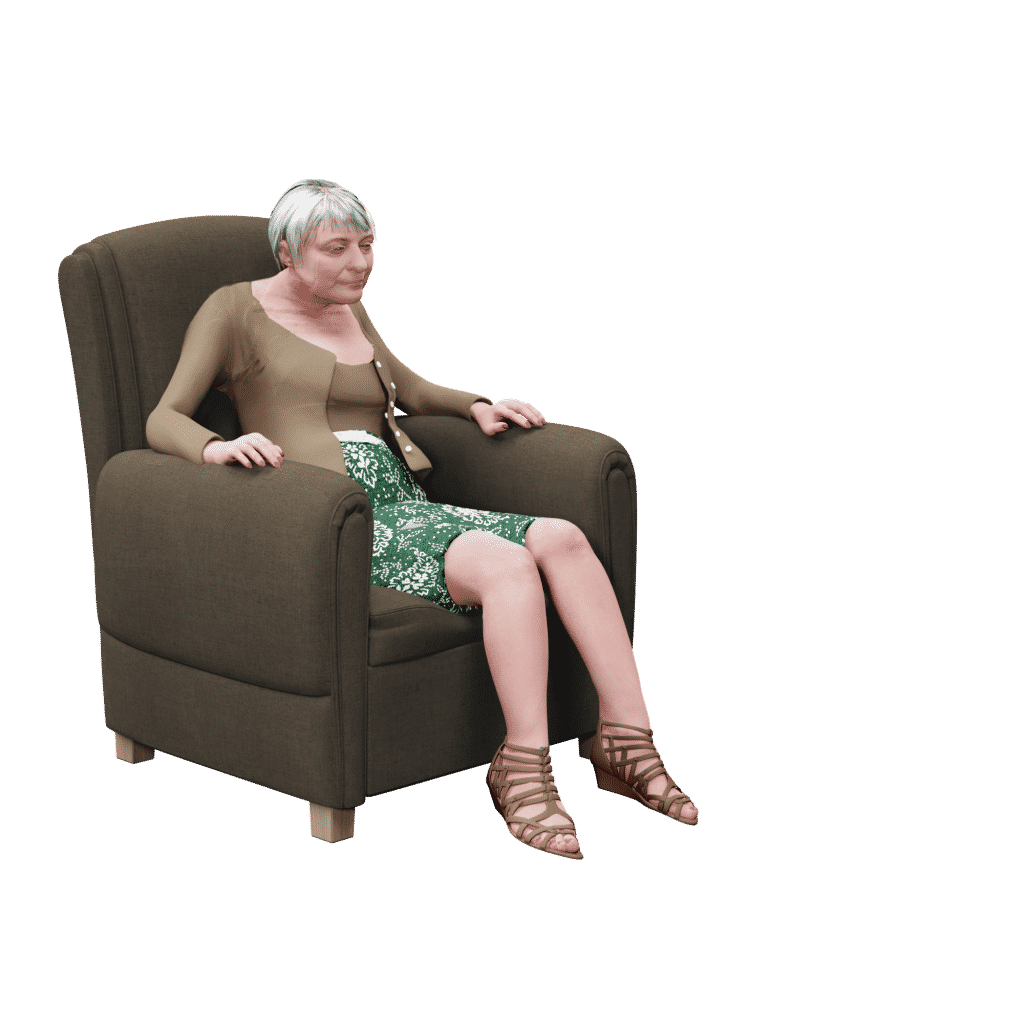
BEFORE
Sarah sitting in a Milano™
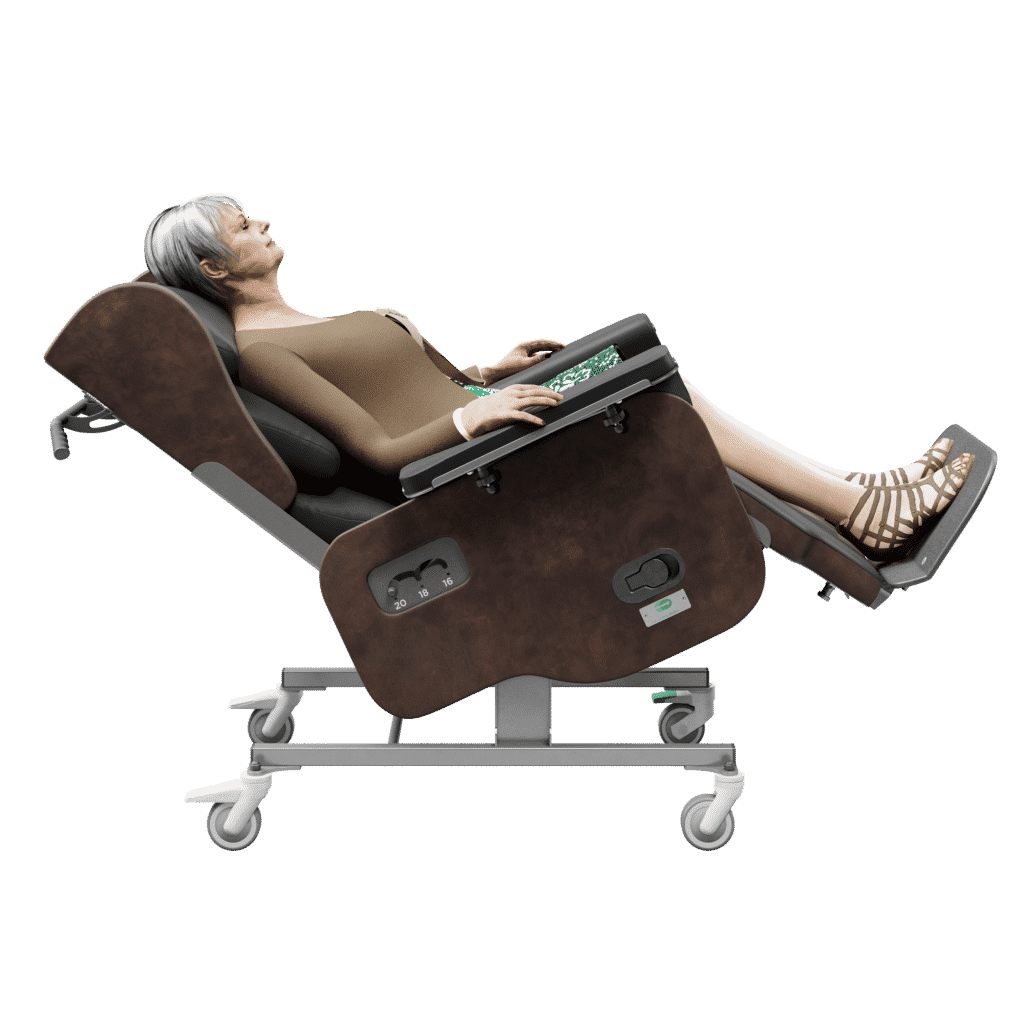
AFTER
Images & Content © Seating Matters 2020
Postural Issues
- Sarah had spasticity that resulted in flexion in her elbows, wrist and fingers, however she was able to achieve almost full extension in her elbows.
- She demonstrated flexed hips, adducted thighs and flexed knees that were unable to fully extend or to bend more than 100°.
- This would cause her to slide forward in her chair and assume a position of anterior pelvis tilt due to lack of foot support.
- Leaning to the left due to curvature in her spine as the day went on and she became more fatigued.
Compensating
- Due to the spasticity in her legs, Sarah was unable to bend her knees far enough to rest her feet completely on the footrest. This meant her legs were pulling her hips and pelvis into a posterior pelvic tilt. There was very little back support in the chair.
- Sarah relieved the pressure in her back by leaning from side to side. This was difficult due to spasticity of the muscles.
- Because she was not fully supported in the chair, Sarah was at risk of falling out of the chair and this was making it hard for family members to leave her alone.
Intervention
During the assessment, it was determined that Sarah needed a chair that could accommodate the curvature of her spine and her lower limb spasticity in order to take pressure off her lower back. She also needed customised seating that would accommodate her shorter physique and safely facilitate position changes, stand transfers and participation in activities of daily living. It was decided that she would use a Seating Matters Milano™ chair with a horseshoe pillow and lateral supports.
“I’ve never been in a chair that can recline more than the Milano – right
when I sat in it I knew it was my chair”
– Sarah.
Qualitative Client Feedback
Sarah was pleased that the Milano looked like a piece of furniture, not a piece of medical equipment. The wheels meant that she could be transported to other rooms in the house without having to use her standard wheelchair. She was able to utilise the recline and 45° tilt function to redistribute the pressure in her lower back thus increasing comfort and reducing the risk of skin breakdown. She suffers less from acid reflex because the Milano put her in a more upright position than her old chair. Most importantly, her pain would decrease all the way down to a 0/10 after sitting in it.
Postural Changes
- Sarah sat upright with normal pelvic posture and sliding from the chair was eliminated.
- Lateral supports helped to accommodate the curvature of Sarah’s spine and prevented her from leaning sideways over the side of the chair.
- This natural sitting position allowed her to sit out for longer periods and socialize without confining her to her bed or one room.
- Comfort was significantly increased.
Caregiver, family feedback
Sarah’s mother was delighted with the new Milano™ chair. She no longer had to worry that her daughter would fall at home and could leave Sarah alone during the day. The family and Sarah appreciated that the chair looked more like a piece of furniture than medical equipment. Sarah looked more at home and natural in the chair and most importantly, had little to no pain during the day.
Functional Changes
Sarah was able to be left at home independently while her family went to run errands. She was able to be upright during the day with no pain and the tilt in space and recline features of the Milano™ allowed her to change positions to help with her symptoms from reflux as well as provide adequate pressure redistribution.
Social Interaction
Sarah no longer had to limit her time out of the house because she had a supportive and comfortable chair that met her positional needs. She was able to be out in the common areas with her family when she got fatigued because the tilt in space and recline allowed her to change position but still be able to interact with family and friends.
Impact on Skin
- The position of Sarah’s pelvis was improved and her feet were fully supported so there was a more even weight distribution throughout her body.
- She no longer leaned heavily to one side.
- The risk of pain and developing a pressure injury was significantly reduced.
Images & Content © Seating Matters 2020
Sarah’s Story and other patient case studies are found in The Clinicians Seating Handbook.
This practical guide to seating is written by Martina Tierney, OT, and used in academia, in clinical practice and with caregivers around the world to guide their practices around specialist seating.
The handbook contains:
- Downloadable PDF – Over 100 pages
- Providing practical tips on performing seating assessments.
- Your go-to guide for supporting various spinal presentations.
- An extended guide to seating bariatric and paediatric patients.
- Information on the new staging guidelines for pressure injuries.
- Expanded, detailed patient case studies.
If you would like to receive a free download PDF copy of The Clinicians Seating Handbook, please fill in your details here:
*Note – the purpose of this blog is to give an overview of the product with some tips to consider on its use. This is not intended to be a substitute for professional or medical advice, diagnosis, prescription or treatment and does not constitute medical or other professional advice. For advice with your personal health or that of someone in your care, consult your doctor or appropriate medical professional.

